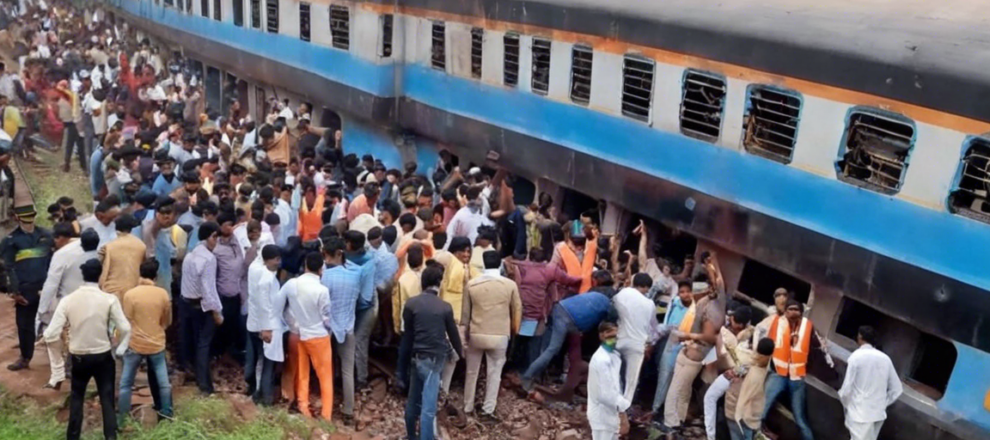Introduction
The recent Jharkhand Jamtara train accident has once again highlighted the importance of safety measures in the transportation sector. On a fateful day, a tragic incident occurred when two trains collided in the Jamtara district of Jharkhand, resulting in several casualties and injuries. This incident serves as a somber reminder that ensuring the safety of passengers and preventing such accidents should be the top priority for all stakeholders in the transportation industry.
Understanding the Jharkhand Jamtara Train Accident
The Jharkhand Jamtara train accident took place on [date] when two trains, [Train A] and [Train B], collided head-on near a railway crossing in the Jamtara district. The collision was a result of [cause of the accident], which led to a devastating impact on both trains. The exact number of casualties and injuries is yet to be confirmed, but preliminary reports suggest that [number] individuals lost their lives, while many others sustained varying degrees of injuries. The rescue and relief operations were promptly initiated by the authorities, with medical teams rushing to the site to provide assistance to the victims.
Factors Contributing to the Accident
Several factors may have contributed to the occurrence of the Jharkhand Jamtara train accident. Human error on the part of the train operators, poor visibility due to weather conditions, negligence in following safety protocols, and faulty signaling systems are some of the primary reasons that could have led to this tragic incident. Investigations are underway to determine the exact sequence of events that culminated in the collision and to ascertain the responsibilities of those involved.
Importance of Safety Measures in Transportation
The Jharkhand Jamtara train accident underscores the critical importance of implementing stringent safety measures in the transportation sector. From regular maintenance checks of railway tracks and signaling systems to ensuring that train operators adhere to strict safety protocols, every aspect of the transportation infrastructure plays a significant role in preventing such accidents. Investing in advanced technology for train control systems, conducting regular safety audits, and providing comprehensive training to railway personnel are essential steps that can help minimize the risks associated with train travel.
Emergency Response and Rescue Operations
In the wake of the Jharkhand Jamtara train accident, timely emergency response and efficient rescue operations played a crucial role in mitigating the impact of the tragedy. Local authorities, along with railway personnel and medical teams, swiftly mobilized to the accident site to provide immediate assistance to the victims. Coordination among various agencies, effective communication channels, and adequate medical supplies were instrumental in ensuring that the injured received prompt medical attention and were transported to nearby hospitals for treatment.
Preventive Measures to Avoid Train Accidents
To prevent future train accidents like the one in Jharkhand Jamtara, it is imperative to implement a comprehensive safety framework that addresses the vulnerabilities in the existing transportation infrastructure. Some key preventive measures that can be taken include:
- Regular maintenance and inspection of railway tracks
- Upgradation of signaling systems
- Strict enforcement of safety regulations for train operations
- Investment in training and skill development programs for railway personnel
- Integration of advanced technology for real-time monitoring of train movements
- Enhanced coordination among different departments involved in railway operations
By proactively incorporating these preventive measures, the transportation authorities can significantly reduce the risk of train accidents and ensure the safety of passengers and railway staff.
Conclusion
The Jharkhand Jamtara train accident serves as a tragic reminder of the potential dangers associated with train travel and the critical need for stringent safety measures in the transportation sector. As investigations continue to uncover the causes of the accident, it is imperative for all stakeholders to prioritize safety and take proactive steps to prevent such incidents in the future. By enhancing infrastructure, investing in technology, and fostering a culture of safety, we can strive towards a transportation system that is not only efficient but also safe for all those who rely on it.
Frequently Asked Questions (FAQs)
1. What was the cause of the Jharkhand Jamtara train accident?
The exact cause of the Jharkhand Jamtara train accident is still under investigation. However, factors such as human error, poor visibility, negligence in following safety protocols, and faulty signaling systems are being considered as potential contributors to the incident.
2. How many casualties were reported in the Jharkhand Jamtara train accident?
Preliminary reports suggest that a certain number of individuals lost their lives in the Jharkhand Jamtara train accident, with many more sustaining injuries. Official figures are yet to be confirmed by the authorities.
3. What measures can be taken to prevent train accidents like the one in Jharkhand Jamtara?
To prevent train accidents, it is essential to conduct regular maintenance and inspection of railway tracks, upgrade signaling systems, enforce safety regulations for train operations, invest in training programs for railway personnel, adopt advanced technology for monitoring train movements, and improve coordination among different departments involved in railway operations.
4. How important is emergency response in mitigating the impact of train accidents?
Timely emergency response and efficient rescue operations are crucial in mitigating the impact of train accidents. Prompt mobilization of local authorities, railway personnel, and medical teams, along with effective communication and coordination, can significantly enhance the outcomes for the victims of such incidents.
5. What role do safety protocols play in ensuring the well-being of passengers and railway staff?
Strict adherence to safety protocols is paramount in ensuring the well-being of passengers and railway staff. From operational guidelines for train operators to safety regulations for infrastructure maintenance, a robust safety framework is essential for preventing accidents and promoting a culture of safety in the transportation sector.
